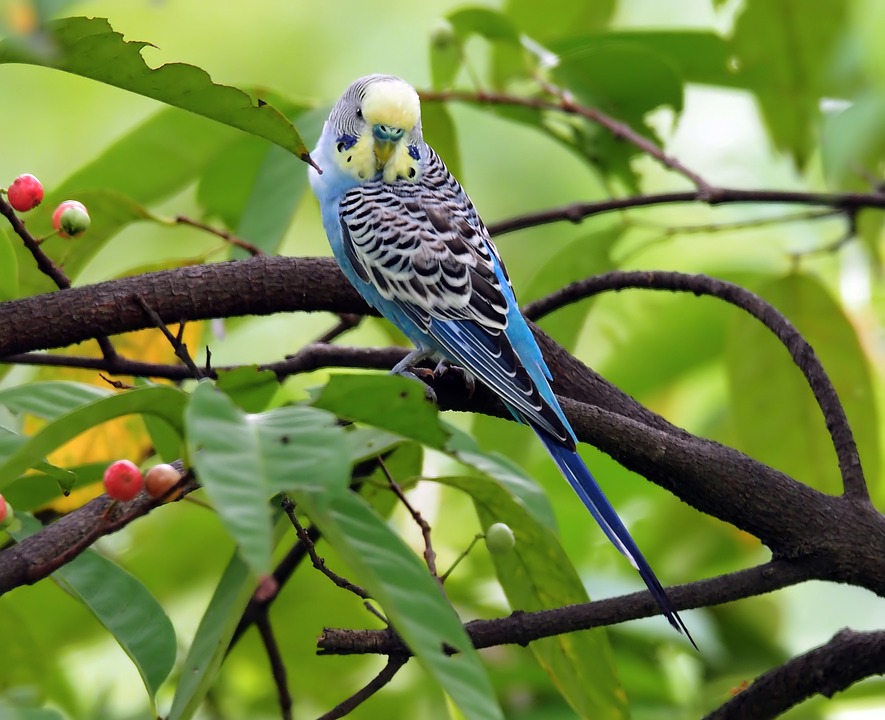Welcome to our informative article about using positive reinforcement to enhance your parrot’s enthusiasm for training. By incorporating positive reinforcement techniques, you can create a rewarding and enjoyable training experience for both you and your feathered friend. In this article, we will explore the benefits of positive reinforcement, discuss effective training methods, and provide answers to frequently asked questions regarding parrot training. Let’s dive in!
Understanding Positive Reinforcement:
1. What is Positive Reinforcement?
Positive reinforcement is a training technique that involves rewarding desired behaviors to encourage their repetition. Instead of focusing on punishing or correcting unwanted behaviors, positive reinforcement focuses on reinforcing and rewarding the behaviors you want to see more of.
2. Why is Positive Reinforcement Important in Parrot Training?
Positive reinforcement is important in parrot training because it builds trust and strengthens the bond between you and your parrot. It encourages your parrot to be willing to learn and try new behaviors, enhances their confidence and self-esteem, and fosters positive behavior.
3. Benefits of Positive Reinforcement:
a. Builds Trust and Strengthen Bond: By using positive reinforcement, you create a positive and trusting relationship with your parrot, which is essential for successful training.
b. Encourages Willingness to Learn: Positive reinforcement motivates your parrot to engage in training sessions and be more open to learning new behaviors.
c. Enhances Confidence and Self-Esteem: When your parrot is consistently rewarded for their efforts, it boosts their confidence and self-esteem, making them more eager to participate in training.
d. Fosters Positive Behavior: Positive reinforcement helps to reinforce positive behaviors, making them more likely to occur in the future.
Implementing Positive Reinforcement Techniques:
1. Identify Reward Preferences:
a. Food Rewards: Find out what types of healthy treats your parrot enjoys and use them as rewards during training sessions. Consider timing and frequency to maintain your parrot’s enthusiasm.
b. Non-Food Rewards: In addition to food rewards, parrots also respond well to verbal praise, physical affection, and interactive toys. Experiment with different types of rewards to find what motivates your parrot.
2. Timing and Consistency:
a. Immediate Reinforcement: Deliver rewards immediately after your parrot exhibits the desired behavior. This helps them understand what specific behavior you are rewarding.
b. Consistent Use of Rewards: Be consistent in using rewards every time your parrot performs the desired behavior. This reinforces the connection between the behavior and the reward.
c. Avoiding Mixed Messages: Ensure that your parrot is not inadvertently rewarded for unwanted behaviors. Consistency is key in reinforcing only the behaviors you want to see more of.
3. Shaping Behavior:
a. Breaking Down Training into Small Steps: Break down complex behaviors into smaller, achievable steps. This makes it easier for your parrot to understand and learn.
b. Rewarding Approximations of Desired Behavior: Initially, reward your parrot for any behavior that is close to the desired behavior. Gradually increase the criteria for earning the reward as your parrot becomes more proficient.
c. Gradual Progression: As your parrot becomes more skilled, gradually increase the difficulty level of the behaviors you are training. This keeps them engaged and challenged.
4. Clicker Training:
a. Introduction to Clicker Training: Clicker training involves using a clicker to mark the desired behavior, followed by a reward. The clicker serves as a precise and consistent reinforcement tool.
b. Associating Clicker with Rewards: Pair the sound of the clicker with a reward by clicking and immediately offering a treat. This helps your parrot understand that the clicker signifies a reward is coming.
c. Clicker as a Precise Reinforcement Tool: With practice, your parrot will associate the clicker with the desired behavior and understand that it leads to a reward. The clicker becomes a precise tool to reinforce specific behaviors.
5. Capturing Spontaneous Behaviors:
a. Recognizing Desirable Actions: Be observant and recognize when your parrot exhibits desirable behaviors spontaneously, such as stepping onto a perch or playing with a toy.
b. Immediate Reinforcement of Spontaneous Actions: When you see a desirable behavior occur naturally, immediately reinforce it with a reward. This encourages your parrot to repeat the behavior.
c. Encouraging Repetition: By consistently reinforcing spontaneous behaviors, you can encourage your parrot to perform them more frequently and on command during training sessions.
Frequently Asked Questions (FAQs):
1. Can positive reinforcement be used for all parrot species?
Yes, positive reinforcement can be used for all parrot species. Each parrot has its own preferences and learning style, so it’s important to tailor the training to suit their individual needs.
2. How long does it usually take to see progress in parrot training with positive reinforcement?
The time it takes to see progress in parrot training varies depending on the individual parrot and the complexity of the behaviors being trained. Consistency, patience, and positive reinforcement are key to successful training.
3. What if my parrot doesn’t seem interested in the rewards I’m offering?
If your parrot doesn’t seem interested in the rewards you’re offering, it may be helpful to try different types of rewards or find out what motivates them. Some parrots may be more motivated by certain treats, toys, or types of attention.
4. Is it possible to use positive reinforcement to correct undesirable behaviors?
Positive reinforcement is primarily used to reinforce and encourage desired behaviors. However, by redirecting your parrot’s attention to more appropriate behaviors and rewarding those, you can effectively discourage and replace undesirable behaviors.
5. Can positive reinforcement training work for older parrots?
Yes, positive reinforcement training can be effective for older parrots. It’s never too late to start using positive reinforcement techniques to enhance their enthusiasm for learning and strengthen your bond.
Conclusion:
Incorporating positive reinforcement techniques into your parrot’s training regimen can significantly enhance their enthusiasm for learning. By understanding the benefits of positive reinforcement and implementing effective training methods, you can foster a strong bond, encourage positive behavior, and create a rewarding experience for both you and your parrot. Remember, patience, consistency, and a genuine love for your feathered companion are key to successful parrot training. Happy training!









